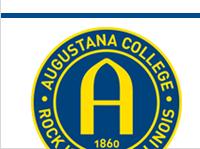Course
BIOL-375 Molecular Genetics
Document Type
Student Paper
Publication Date
2-2016
Disciplines
Bioinformatics | Biology | Genetics and Genomics | Genomics | Life Sciences | Molecular Biology | Molecular Genetics
Description, Abstract, or Artist's Statement
This project is part of the Meiothermus ruber genome analysis project, which uses the bioinformatics tools associated with the Guiding Education through Novel Investigation – Annotation Collaboration Toolkit (GENI-ACT) to predict gene function. We investigated the biological function of the genes Mrub_1710 and Mrub_1712. We predict that Mrub_1710 encodes the enzyme glycine dehydrogenase (DNA coordinates 3046168.. 3049041 on the reverse strand), which is the first step of the glycine degradation pathway (KEGG map number 00260). It catalyzes the conversion of glycine to S-Amino-methyldihydro-lipoylprotein. The E. coli K12 MG1655 ortholog is predicted to be b2903, which has the gene identifier gcvP. We predict that Mrub_1712 encodes the enzyme aminomethyltransferase (DNA coordinates 3049573.. 3050667 on the reverse strand), which is the second step of the glycine degradation pathway (KEGG map number 00260). It catalyzes the conversion of S-Amino-methyldihydro-lipoylprotein to dihydrolipoylprotein. The E. coli K12 MG1655 ortholog is predicted to be b2905, which has the gene identifier gcvT.
Augustana Digital Commons Citation
Groen, Malory J. and Scott, Dr. Lori. "Bioinformatics indicates that Meiothermus ruber genes Mrub_1710 and Mrub_1712 are homologs of the Escherichia coli genes b2903 (P-protein; glycine dehydrogenase) and b2905 (T-protein; aminomethyltransferase), respectively" (2016). Meiothermus ruber Genome Analysis Project.
https://digitalcommons.augustana.edu/biolmruber/13
Included in
Bioinformatics Commons, Biology Commons, Genomics Commons, Molecular Biology Commons, Molecular Genetics Commons
